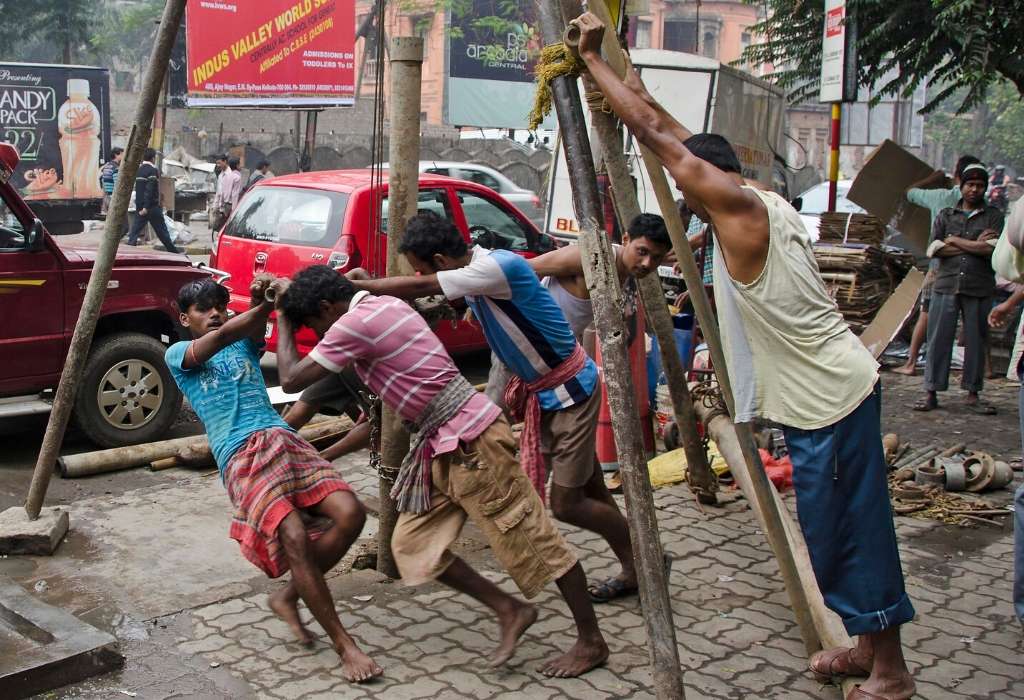Coalitions are invariably necessary for addressing the complex issues that civil society organisations are motivated to work on. They are required to aggregate adequate resources and bring together diverse capabilities.
Philanthropists and corporations with CSR ambitions, often form coalitions amongst themselves to aggregate financial resources to have ‘impact at scale’. Generally, their theory when shaping the coalition is that they should focus on one cause, combine their resources, and push out a common solution as widely as possible—a ‘one-size-fits-all’ approach.
Other forms of coalitions bring diverse partners together, from across the corporate/philanthropic, civil society, and government sectors. The reason for this is the understanding that complex issues require combinations of diverse perspectives for a good understanding of the challenge, and to provide diverse capabilities for the delivery of the solution.
The former, single stakeholder type of coalition, though limited in its capability, is simpler to set up. Nevertheless, even such coalitions have difficulties in forming and performing. Issues of ‘brands’, decision rights, and even personal egos, come in the way. Attention to the scale of the outcome in terms of sustainable impact on the lives of people, slips too easily into attention to the scale of the coalition itself, and to impacts on the brands of the partners involved.
Coalitions amongst civil society organisations are bedeviled by similar, self-centered concerns, even when they are focused on a single cause—for example, the rights of women, or the needs of children. Who will be invited to high-level meetings with governments? Who will get the most credit for the outcome? When coalitions aim to be broader, difficulties in forming coalitions increase. For one, the coalition must have a common purpose for its existence and a common goal to align partners’ actions. Another, is the requisite architecture for the coalition.
The recent history of the labour rights movement in India provides insights into some of these challenges. Indian labour unions have been struggling for some years to combine their energies to serve the crying needs of marginalised workers, who are in informal employment or in self-employment, have no protections of their rights to speak of, and no social security.
Labour unions are mistrusted because they are perceived to be serving the interests of their own leaders.
The unions have been unable to form an effective coalition for the common cause of India’s workers because they cannot agree amongst themselves on the methods of action to apply, and because they mistrust each other’s broader political intentions. They have realised that unions are mistrusted because they are perceived to be serving the interests of their own leaders, and only the small number of workers in the organised sector. They must change public perceptions and win the right to represent all of India’s workers. Therefore, many have been working on the ground to provide relief to families in distress, even before the pandemic struck, and they have multiplied their efforts since then.
Some unions believe that the establishment must be confronted, because sitting around with it in tripartite negotiations has failed to achieve any fundamental changes in the conditions of Indian workers.
These same questions—about appropriate methods and about ultimate objectives—seem to arise in other civil society coalitions also. Putting it bluntly: Is it a matter of only service to the people through relief and development, or also of fighting for their rights?

There is little benefit to the people by stakeholders forming coalitions only at the top, if their representatives do not collaborate with each other on the ground. | Picture courtesy: Flickr
Formation and governance of coalitions
Civil society organisations must become parts of two types of coalitions to produce sustainable all-round change in the lives and livelihoods of people marginalised by the prevalent socio-economic structures.
One is the single stakeholder type—that is a coalition amongst civil society organisations, as mentioned before. The other is coalitions that include other stakeholders too—the institutions who have wealth, governments who have power, and the people as well.
It is important that civil society’s leaders build good coalitions at the top for building better multi-stakeholder coalitions on the ground, if we are to achieve future goodness of humanity and the planet.
Coalitions of civil society organisations, whose core purpose is to make sustainable improvements in the lives of the poorest citizens of society, and who are also concerned with threats to their existence from the Establishment, may find some common cause with labour unions. They will also be confronted with similar issues in forming effective coalitions. These are:
- What is the reason for forming a coalition—what is its purpose?
- Is it a tactical coalition, for a short-term objective? And will we disband when we have achieved it (or failed to achieve it)?
- Or, are we united for a superordinate purpose, which will provide us a glue to stay together and win the war, with several tactical campaigns on the way?
- Are we all committed to this superordinate purpose?
- If we want ‘scale’ in our coalition so that we can overcome challenges, and we also want the strengths of diverse capabilities, who will we admit into our coalition, and who will we shun?
- Who is the ‘we’ that will decide whom to admit?
- Do we see ourselves as an ‘organisation’ with conventional structures of governance? Or, will we operate as a network, or even only as a movement?
- How much structure do we need to define while we are getting going? And, a related question—what would be appropriate structures for providing adequate coherence to shape an energetic movement or an effective network?
Holistic, sustainable changes on the ground, that benefit and empower people, require collaboration between the different sources of power—the power of the people, the power of money, and the power of government authority.
Good coalitions at the top are hard to form because the partners are divided by invisible wall.
There is little benefit to the people by stakeholders forming coalitions only at the top and declaring goals for change in the world, if their representatives do not collaborate with each other on the ground, and if they do not make improvements in the lives of people, which is their common objective.
The Sustainable Development Goals (SDGs) point the way to address this challenge. The first 16 SDGs address the many and multi-faceted challenges facing humanity that must be addressed very urgently. None of the SDGs can be addressed without multi-stakeholder collaboration. Moreover, multi-stakeholder teams, working on each of the 16 goals, must work with each other too, because all the goals are systemically interconnected. The 17th SDG—the need for better partnerships—is the key to achieving the other SDGs.
Good coalitions at the top are hard to form because the partners are divided by invisible walls created by competition for recognition, and with jockeying for control. These walls also tend to extend all the way down the rank and file of their organisations.
Convergence amongst all stakeholders must happen on the ground
The world needs local systems solutions to solve global systemic problems. Therefore, all civil society actors—other than pure activists perhaps—must be good multi-stakeholder coalition builders on the ground. They must have the ability to facilitate systems thinking and collaborative action on the ground—which must be a common capability for all, irrespective of the specific causes they are committed to.
Effective coalitions form bottom up, not top down. The people on the ground must set the agenda, because they are the common cause that the coalition at the top was formed for.
—
Know more
- Understand how nonprofits can genuinely support social movements, not through partnership, but through solidarity.
- Read the article CSOs shouldn’t try to be like companies in scaling up by Arun Maira, to understand how we can rethink fundamental concepts regarding the governance of civil society organisations.





